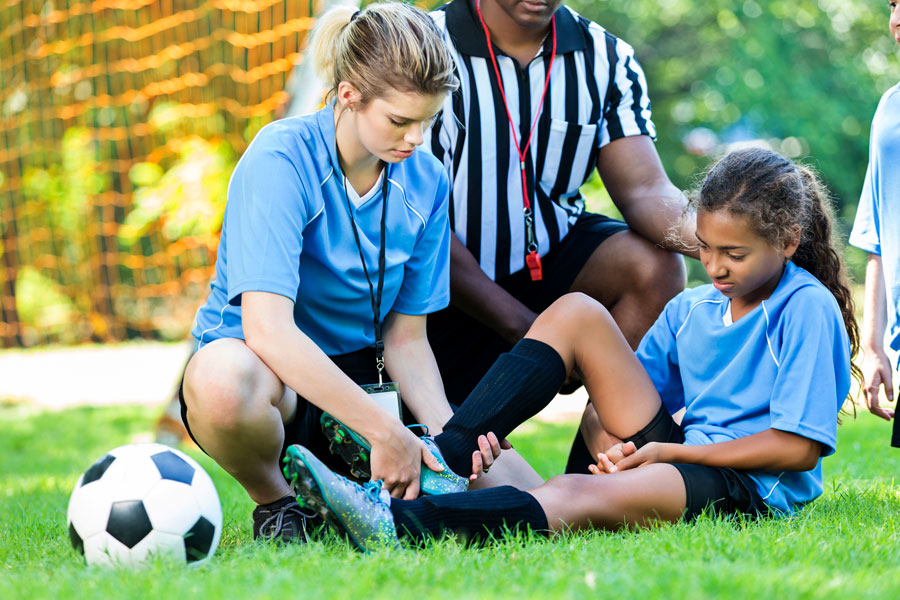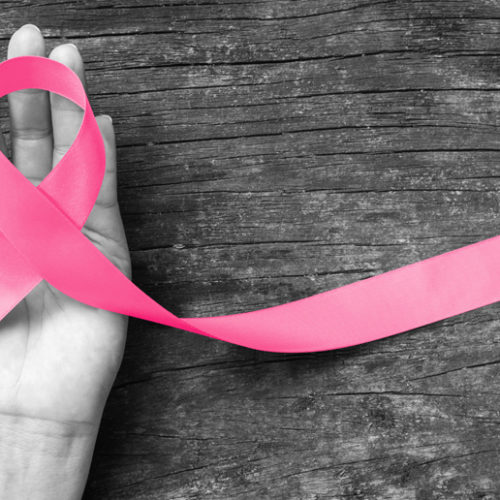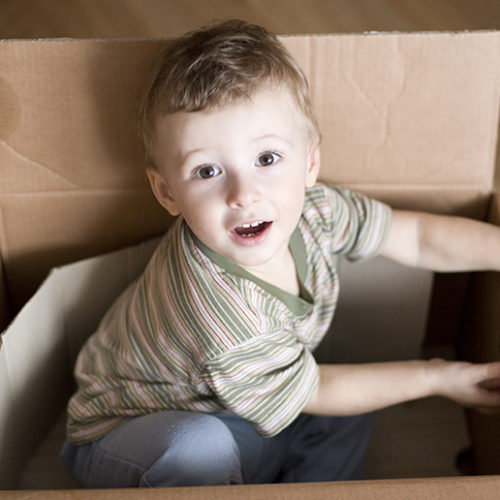Exercise & most common sports injuries in children
Playing sports has many health and social benefits that can last a lifetime. However, sports also come with a risk of injury, including internal injuries. Here we look at the signs and treatments for common sports injuries in kids.
Everyone knows that exercise is important for children, but now that children are spending more time than ever before looking at phone, computer and tablet screens, taking regular exercise and playing sports is of more crucial importance than ever before.

BENEFITS OF PLAYING SPORTS FOR CHILDREN
Children are encouraged to play sports for good reasons! There are many physical, emotional, and interpersonal benefits that children will reap when playing sports, which include:
Motor skills development
Participating in sports helps children to develop their coordination skills
Healthy vision
Research shows that children who spend time outdoors playing, especially organised sports, are less likely to develop vision problems. The reason is that cardio exercise increases the flow of blood to the optic nerve and the retina and because of this, children’s overall eye health and vision can be healthily maintained.
Healthy weight
Data shows that children who are active, especially after school, are more likely to have a healthy weight than kids with sedentary habits, such as playing computer games. Playing sports reduces the risk of obesity in children, as well as increasing their cardiovascular fitness.
Physical development
Playing sports facilitates the healthy growth of bones, muscles, ligaments and tendons in children, as well as improving their coordination and balance.
Social skills development
Playing on a team means learning to work with others and support them. Playing sports teaches children to learn to cooperate, to be less selfish and to listen to other children. It also gives them a sense of belonging to groups and helps them to make new friends. Importantly, in this era of reliance on social media to make friends, playing physical sports, particularly team sports, helps children to build their social circle outside school.
Self-confidence
Success as a team member and a sports player increases confidence and self-esteem in children, and facilitates a growth and achievement mindset that sets them up for success in the future.
Sportsmanship
Learning the rules of the game, respect for coaches and referees, and how to stay positive even when losing are all valuable life lessons for children to learn. Sports also gives kids the opportunity to practice social skills, such as listening and taking turns, which will be valuable skills to take into adulthood.
Fun and enjoyment
You don’t need an expert to tell you that doing things you enjoy makes you happy! There is no doubt that children who find a sport they love to play will get a lot of fun and enjoyment from it, and this positive mood carries over into other areas of their lives too. Sports can help children to become happier people, which is an extremely important attribute in their lives at any age.
Friendship
Sports build relationships, giving kids the opportunity to spend time with their friends, bond over their experiences, work hard together, and compete in a healthy way against each other. By participating in sports, children are able to strengthen existing friendships and create new ones.
WHAT TO DO IF YOUR CHILD GETS A SPORTS INJURY
The more a child plays contact sports, or engages in vigorous physical activity, the more the chances that they’ll fall over at some stage, or get a minor injury. If your child does get injured while playing sports, the best treatment plan is ‘R.I.C.E,’ which stands for the following:
Rest
Keep your child from using the injured area until it has been evaluated by a doctor
Ice
Apply ice to the injured area to help decrease the pain and swelling. Only apply the ice for a maximum of 5-10 minutes at a time.
Crushed or cubed ice; or even a bag of frozen peas works best but avoid using chemical cold packs if you can. Apply ice to the injury for the first 48 – 72 hours after injury. Never let your child sleep with ice on the injured area.
Compression
Use an elasticated wrap or compression sock to reduce the swelling. Apply wrap to the injury starting below the injured area and wrap upwards. Always leave the body extremities (fingers or toes) exposed. Keep an eye out for any numbness, discoloration or changes in your child’s temperature, and be prepared to loosen the bandaging if needed. Do not let your child sleep with the wrap on the injured area.
Elevation
Use gravity to control swelling by propping up the injured area higher than your child’s heart.
INTERNAL INJURIES
While exercise has vitally important physical and social benefits for children, playing sports also carries some risk of injuries – both external injuries that you can see, and internal injuries that you can’t. So, if you’re the parent of a young sports enthusiast, you’re probably used to dealing with cuts, scrapes, bruises, bumps and sprains. If, however, your child plays a contact sport such as rugby, netball or football, there is a small chance they could one day experience the kind of internal injury that results from a hard impact.
Injuries that happen this way can be serious when a child’s body hits or collides with another object or person, because the soft underbelly area is usually exposed and therefore vulnerable to internal abdominal injury. These types of injury are most common in contact sports such as rugby, netball, football, hockey and basketball.
An internal abdominal injury can cause rapid blood loss, so it’s important to recognise it as soon as possible. If you, your child’s coach, teacher or doctor suspects this type of injury, your child should be taken immediately for an emergency care assessment in hospital. Sports abdominal injuries in children are rare, but the most commonly seen injuries include:
Abdominal injury
This means an injury to the pancreas, diaphragm, stomach, gallbladder, bladder, or intestines. Any organ in the abdomen can be injured – either a single organ or multiple organs at the same time.
Liver injury
This will cause pain in the upper right side of a child’s abdomen. The liver has 2 lobes, but the one most often injured is the right lobe, because it is bigger and presses against the ribcage. A torn liver can cause severe internal bleeding.
Spleen injury
This would cause pain in the upper left side of the child’s abdomen. The spleen filters almost 10% of the body’s blood supply every minute. Tearing of the spleen can cause rapid and life-threatening internal bleeding.
Kidney injury
This may cause flank pain and, in this case, blood can often be seen in a child’s urine.
Signs of internal abdominal injury
These are signs and symptoms to look for:
- Abdominal pain and tenderness over the injured area.
- Rigid abdomen and left arm and shoulder pain (spleen).
- Right-sided abdominal pain and right shoulder pain (liver).
- Blood in the urine (kidney) and cold, sweaty skin.
- Blu-ish discoloration of the belly or bruising around the belly button and flanks.
- Nausea and vomiting.
- Rapid pulse, low blood pressure and loss of consciousness.
Treatment for internal abdominal injuries
Obviously, your child will need to go to hospital immediately for an emergency evaluation in the event of a suspected internal injury. The hospital will check your child’s pulse and blood pressure because a faster pulse and falling blood pressure means there is internal bleeding. If this is the case, then the treatment involves stabilising their blood pressure by giving fluids via IV. Blood tests may be also done, as well as the hospital also checking to see if the liver is injured. Often, a CT scan may be necessary to look for any internal damage. If there is no evidence of bleeding, your child may be kept in hospital for a short time for observation, or sent home.
Prevention of internal abdominal injuries
Internal abdominal sports injuries are rare, but can be serious. For this reason, it is crucial that, if your child plays a contact sport, you take some important safety steps:
- Make sure that the contact sport your child plays is properly coached and supervised.
- Make sure that a certified medical professional is on hand at every sports session to assess any injuries immediately.
- Ask your child’s school about their emergency plan in case of a severe abdominal injury or other serious injury problem.
- Make sure your child wears all of the appropriate protective gear properly.
Sports safety gear should meet all safety standards and be worn at all times while your child is playing the sport.












Comments